Understanding the difference between WD Blue, Red, Black, Green, Purple and Gold Hard Drives
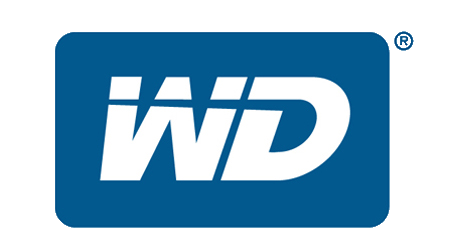 Western Digital have been in the hard drive and SSD market since the 1970s and I think it is safe to say that are one of the biggest and best storage media providers in the world. A lot of this success and market dominance is down to 3 factors.
Western Digital have been in the hard drive and SSD market since the 1970s and I think it is safe to say that are one of the biggest and best storage media providers in the world. A lot of this success and market dominance is down to 3 factors.
- Pricing their products correctly so as to ensure that a home user can buy hard drive media priced in their budget that performs to that degree, whereas a highend business users has the option to pay more and get more.
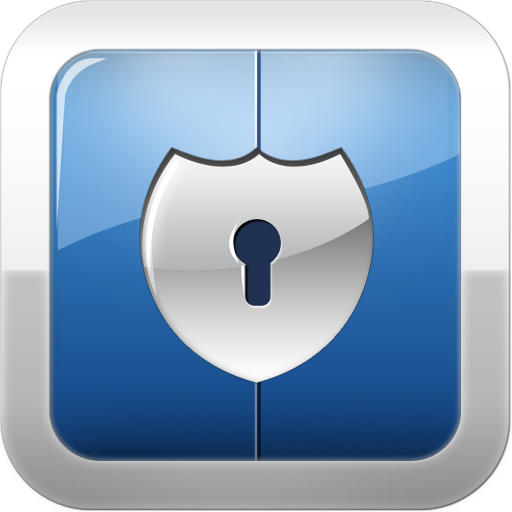 En-devouring to make their products are designed with the task in mind, rather than a single HDD or SSD for all purposes. You wouldn’t use a hammer to screw an IKEA table together, you wouldn’t use a screw driver to paint a fence. Likewise WD have Hard Drive that are tailored for intensive cold storage in data centers, as well as HDD that are designed for basic PC use and Desktops – this not only allows for grading pricing for consumers, but also that you are buying a tool that perfectly befits the task at hand.
En-devouring to make their products are designed with the task in mind, rather than a single HDD or SSD for all purposes. You wouldn’t use a hammer to screw an IKEA table together, you wouldn’t use a screw driver to paint a fence. Likewise WD have Hard Drive that are tailored for intensive cold storage in data centers, as well as HDD that are designed for basic PC use and Desktops – this not only allows for grading pricing for consumers, but also that you are buying a tool that perfectly befits the task at hand.- Ever heard the expression K.I.S.S? Keep It Simple, Stupid! This is possibly the most important factor in WD’s structure these last 5 years or more. Rather than bombard users with ill formed part numbers and flashy names (that’s right, I am looking at you Seagate – what exactly is an ‘Ironwolf’?), WD have just stuck to a simple colour code system of Drives. Once you know what each colour means, then you can pretty much narrow down ever WD drive easily.
What are the WD colors and what do they mean?
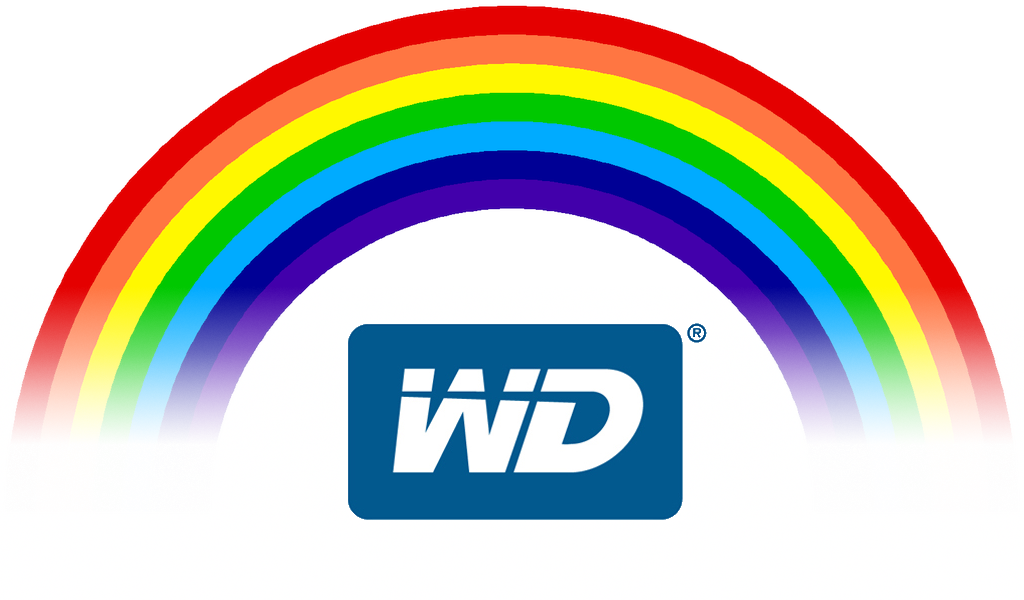 So, now you know why Western Digital is widely regarded as one of the best HDD manufacturers in the industry, let’s delve a little deeper into what each of the colors mean. Currently the WD HDD and SSD range can be broken down into 6 colours, and each corresponding intended storage environment (basically the machine they will go in!). Below are each of the colours and what they are used for.
So, now you know why Western Digital is widely regarded as one of the best HDD manufacturers in the industry, let’s delve a little deeper into what each of the colors mean. Currently the WD HDD and SSD range can be broken down into 6 colours, and each corresponding intended storage environment (basically the machine they will go in!). Below are each of the colours and what they are used for.
The WD Blue Hard Drive for Basic Desktop Use
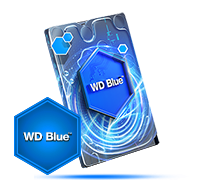 We start with the most cost effective and budget drive of all, the WD Blue HDD series. These are designed with low level access and long term use in mind. Once these would have been recommended for use for your operating system inside a non mission-critical PC (general browsing etc), but now with the inexpensive of SSD in 128-512GB and it becoming ideal for your operating system, start up and primary apps, the WB Blue hard drive has been demoted to basic storage use. You should not use WD Blue in a RAID and is cheifly designed for everyday storage needs where Read and Write speeds are not paramount.
We start with the most cost effective and budget drive of all, the WD Blue HDD series. These are designed with low level access and long term use in mind. Once these would have been recommended for use for your operating system inside a non mission-critical PC (general browsing etc), but now with the inexpensive of SSD in 128-512GB and it becoming ideal for your operating system, start up and primary apps, the WB Blue hard drive has been demoted to basic storage use. You should not use WD Blue in a RAID and is cheifly designed for everyday storage needs where Read and Write speeds are not paramount.
| WD60EZRZ | 6TB | SATA 6Gb s | 5400RPM |
| WD50EZRZ | 5TB | SATA 6Gb s | 5400RPM |
| WD40EZRZ | 4TB | SATA 6Gb s | 5400RPM |
| WD30EZRZ | 3TB | SATA 6Gb s | 5400RPM |
| WD20EZRZ | 2TB | SATA 6Gb s | 5400RPM |
| WD10EZEX | 1TB | SATA 6Gb s | 7200 |
| WD5000AZRZ | 500GB | SATA 6Gb s | 5400RPM |
| WD2500AAKX | 250GB | SATA 6Gb s | 7200 |
The WD Red Hard Drive for NAS and RAID needs
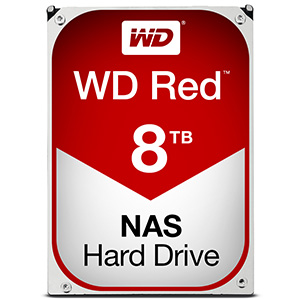 Possibly the most well know WD HDD Color we will talk about today, WD Red is the Drive you need for your NAS Server. If you are looking at buying a brand new Synology NAS for your home or a beefed up QNAP NAS for your business, then it is paramount you get HDD Media that is designed to not only be ready for sporadic and irregular read and write (as your access to the NAS Server will differ constantly) but also Hard Disk media that is designed to be on 24 hours a day, 7 days a week. In this environment, a WD Blue is just no longer suited and though will perfect the job, will do so much slower and is susceptible to errors and potential HDD Failure. Moreover if your network attached storage data is mission critical, of sentimental value or just plain impossible to replace (thinking of my original recording of ‘Bernard and the Genie’), then you will no doubt have more than one HDD in the NAS enclosure, in a RAID volume. Drives in a RAID have to work that little bit harder as data is spread over the drives for redundancy (so the data is duplicated) like butter over toast! WD Red Drives are designed to be used in this RAID environments too and for greater lengths of time.
Possibly the most well know WD HDD Color we will talk about today, WD Red is the Drive you need for your NAS Server. If you are looking at buying a brand new Synology NAS for your home or a beefed up QNAP NAS for your business, then it is paramount you get HDD Media that is designed to not only be ready for sporadic and irregular read and write (as your access to the NAS Server will differ constantly) but also Hard Disk media that is designed to be on 24 hours a day, 7 days a week. In this environment, a WD Blue is just no longer suited and though will perfect the job, will do so much slower and is susceptible to errors and potential HDD Failure. Moreover if your network attached storage data is mission critical, of sentimental value or just plain impossible to replace (thinking of my original recording of ‘Bernard and the Genie’), then you will no doubt have more than one HDD in the NAS enclosure, in a RAID volume. Drives in a RAID have to work that little bit harder as data is spread over the drives for redundancy (so the data is duplicated) like butter over toast! WD Red Drives are designed to be used in this RAID environments too and for greater lengths of time.
 Finally, WD Red HDDs have firmware onboard that controls the disks behaviour in a NAS server, catering from everything vibration and temperature sensitivity, all the way through to intelligent spin speed and cache allocation. So, if you are looking to populate a NAS, then definitely go for WD Red. Also see below for the WD Red Pro series for Enterprise NAS use and enclosures with more than 4 or 5 HDD Bays.
Finally, WD Red HDDs have firmware onboard that controls the disks behaviour in a NAS server, catering from everything vibration and temperature sensitivity, all the way through to intelligent spin speed and cache allocation. So, if you are looking to populate a NAS, then definitely go for WD Red. Also see below for the WD Red Pro series for Enterprise NAS use and enclosures with more than 4 or 5 HDD Bays.
Standard WD Red NAS HDD
| WD80EFZX | 8TB | SATA 6Gb s | 5400RPM | 128MB |
| WD60EFRX | 6TB | SATA 6Gb s | 5400RPM | 64MB |
| WD50EFRX | 5TB | SATA 6Gb s | 5400RPM | 64MB |
| WD40EFRX | 4TB | SATA 6Gb s | 5400RPM | 64MB |
| WD30EFRX | 3TB | SATA 6Gb s | 5400RPM | 64MB |
| WD20EFRX | 2TB | SATA 6Gb s | 5400RPM | 64MB |
| WD10JFCX | 1TB | SATA 6Gb s | 5400RPM | 16MB |
Enterprise WD Red Pro NAS HDD
(All are Dedicated 7200RPM)
| WD8001FFWX | 8TB | SATA 6Gb s | 128MB |
| WD6001FFWX | 6TB | SATA 6Gb s | 128MB |
| WD5001FFWX | 5TB | SATA 6Gb s | 128MB |
| WD4001FFSX | 4TB | SATA 6Gb s | 64MB |
| WD3001FFSX | 3TB | SATA 6Gb s | 64MB |
The WD Green Series of Hard Drives for Lower Power Consumption for quieter and Cooler requirements
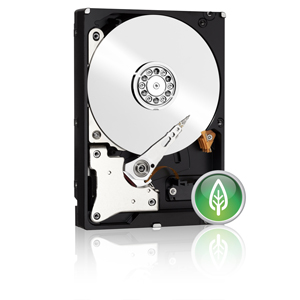 The WD Green series, once very popular, is largely overlooked these days. This is once again largely due to the manufacturing technique of HDD becoming far more efficient, as well as SSD media becoming lower in price. That said, if you require a single HDD for backup storage, a secondary media source or just to be used occasionally, then the WD Green series may well be for you. They are designed to use less power than other Hard Drives as well as producing less vibration or heat whilst in use. This of course does mean they are available in smaller capacities and the read and write is of a lower speed, so these should never be used as a primary OS Boot drive or for a large scale RAID enclosure (early varients were but since then much more tailored drives have been released)
The WD Green series, once very popular, is largely overlooked these days. This is once again largely due to the manufacturing technique of HDD becoming far more efficient, as well as SSD media becoming lower in price. That said, if you require a single HDD for backup storage, a secondary media source or just to be used occasionally, then the WD Green series may well be for you. They are designed to use less power than other Hard Drives as well as producing less vibration or heat whilst in use. This of course does mean they are available in smaller capacities and the read and write is of a lower speed, so these should never be used as a primary OS Boot drive or for a large scale RAID enclosure (early varients were but since then much more tailored drives have been released)
The WD Black Series for those that need rugged, enduring, fast long-term data stability
 Another Hard Drive type that those with a background in PC building and Photo Editing will be aware of. WD Black HDD are designed for high performance Hard Disk media use. If you require large capacity HDD for your files for editing, or in a large scale Direct Attached Storage (DAS) enclosure, then the WD Black series will more than likely be the drive for you. They are seen as the drive of choice of large scale media editors due to their balance of large capacity vs access speeds.of course, you will get faster speeds from using an SSD but you shouldn’t really RAID SSDs beyond a RAID 0 or RAID 1 and moreover the price per GB of an SSD is subtantially higher than that of a WD Black Drive. With a dedicated 7200 RPM, 128MB Cache and 5 Year warranty, the western digital black drive is the choice for those that was reliability, speed and long-term piece of mind.
Another Hard Drive type that those with a background in PC building and Photo Editing will be aware of. WD Black HDD are designed for high performance Hard Disk media use. If you require large capacity HDD for your files for editing, or in a large scale Direct Attached Storage (DAS) enclosure, then the WD Black series will more than likely be the drive for you. They are seen as the drive of choice of large scale media editors due to their balance of large capacity vs access speeds.of course, you will get faster speeds from using an SSD but you shouldn’t really RAID SSDs beyond a RAID 0 or RAID 1 and moreover the price per GB of an SSD is subtantially higher than that of a WD Black Drive. With a dedicated 7200 RPM, 128MB Cache and 5 Year warranty, the western digital black drive is the choice for those that was reliability, speed and long-term piece of mind.
| WD6001FZWX | 6TB | SATA 6Gb s | 7200 | 128MB |
| WD5001FZWX | 5TB | SATA 6Gb s | 7200 | 128MB |
| WD4003FZEX | 4TB | SATA 6Gb s | 7200 | 128MB |
| WD1003FZEX | 1TB | SATA 6Gb s | 7200 | 64MB |
The WD Purple Series for CCTV, Network and Direct Recording Surveillance needs
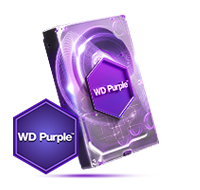 Released only a few years ago, the WD Purple HDD series is designed for Surveillance requirements. You might think that when using multiple IP or Cable Surveillance cameras in the home, office or retail sector, that you should only really think about the quality of hte cameras. This is sort of true – the better the camera, the more features and better recording. However if will all come to nothing if the Hard Drive media you are writing to is unsuitable. Unlike almost all other HDD use across all environments, Hard Disks used in Surveillance are more than 95% used for Writing and 5% for reading – i.e footage is recorded and written to the drives constantly and only accessed rarely by comparison (the reading of the disk). So, if you have x5 or x10 Relatively high recording cameras sending 2 or 5MB of recorded footage constantly, then you will need to ensure that both the recording server can keep up and that the drives are designed to record the data incoming as fast as it arrives! This is where WD Purple shines.
Released only a few years ago, the WD Purple HDD series is designed for Surveillance requirements. You might think that when using multiple IP or Cable Surveillance cameras in the home, office or retail sector, that you should only really think about the quality of hte cameras. This is sort of true – the better the camera, the more features and better recording. However if will all come to nothing if the Hard Drive media you are writing to is unsuitable. Unlike almost all other HDD use across all environments, Hard Disks used in Surveillance are more than 95% used for Writing and 5% for reading – i.e footage is recorded and written to the drives constantly and only accessed rarely by comparison (the reading of the disk). So, if you have x5 or x10 Relatively high recording cameras sending 2 or 5MB of recorded footage constantly, then you will need to ensure that both the recording server can keep up and that the drives are designed to record the data incoming as fast as it arrives! This is where WD Purple shines.
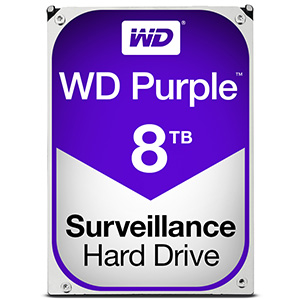 They are desisgned to keep up with this heavy writing behaviour in a NAS or DAS system, suitable for doing this whilst in a RAID 5 or RAID 6 and are designed to be powered on and in use for weeks and months at a time. So if you need a Drive for recording footage from CCTV IP cameras or Cable-to-Camera cables, or are even jsut looking for drives for a NAS that you plan to use as for surveillance in the background, then go for the WD Purple series as it will provide the most stable and reliable result possible. Additionally, if you are using a Network video recording device (NVR), that you use the NVR specialised WD Purple NVR HDD
They are desisgned to keep up with this heavy writing behaviour in a NAS or DAS system, suitable for doing this whilst in a RAID 5 or RAID 6 and are designed to be powered on and in use for weeks and months at a time. So if you need a Drive for recording footage from CCTV IP cameras or Cable-to-Camera cables, or are even jsut looking for drives for a NAS that you plan to use as for surveillance in the background, then go for the WD Purple series as it will provide the most stable and reliable result possible. Additionally, if you are using a Network video recording device (NVR), that you use the NVR specialised WD Purple NVR HDD
| WD80PUZX | 8TB | SATA 6Gb s | 5400RPM | 128MB |
| WD60PURX | 6TB | SATA 6Gb s | IntelliPower | 64MB |
| WD40PURX | 4TB | SATA 6Gb s | IntelliPower | 64MB |
| WD30PURX | 3TB | SATA 6Gb s | IntelliPower | 64MB |
| WD20PURX | 2TB | SATA 6Gb s | IntelliPower | 64MB |
| WD6NPURX | 6TB | SATA 6Gb s | IntelliPower | 64MB |
| WD4NPURX | 4TB | SATA 6Gb s | IntelliPower | 64MB |
The WD Gold Series for Data Centers, Bulk Cold Storage solutions and High Capacity Workloads
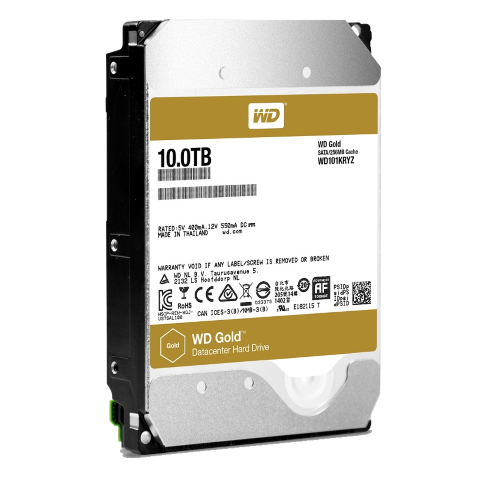 The most recent addition to the WD Colors collection. The WD Gold series is designed for Data Centers (or Data Centres!) or long term cold storage in smaller RAID arrays. They arrive with a much more rugged, long term chassis design as they will be HEAVILY used! To back up this level of use, WD provide a 5 Year warranty on these drives. Also, it is well known that Data Centers get through drives much quicker than most HDD Media environments and though the WD Gold Series (available in both SATA and SAS) are more expensive than most hard drives, this cost will pale into comparison to if you filled your data center with WD Blue or WD Green drives and they required replacement more often – as well as the Read and Write operations on the non-gold drives being efficiency and productivity down too. WD Have a long history of Data Center hard drives before they rebranded to the Gold series. Each kind of drive (tailed to different center and use types) was built with longevity in mind, but with names like Xe, Re and Se, they simplified matters and created the Gold Series to make it easier to comprehend.
The most recent addition to the WD Colors collection. The WD Gold series is designed for Data Centers (or Data Centres!) or long term cold storage in smaller RAID arrays. They arrive with a much more rugged, long term chassis design as they will be HEAVILY used! To back up this level of use, WD provide a 5 Year warranty on these drives. Also, it is well known that Data Centers get through drives much quicker than most HDD Media environments and though the WD Gold Series (available in both SATA and SAS) are more expensive than most hard drives, this cost will pale into comparison to if you filled your data center with WD Blue or WD Green drives and they required replacement more often – as well as the Read and Write operations on the non-gold drives being efficiency and productivity down too. WD Have a long history of Data Center hard drives before they rebranded to the Gold series. Each kind of drive (tailed to different center and use types) was built with longevity in mind, but with names like Xe, Re and Se, they simplified matters and created the Gold Series to make it easier to comprehend.
| WD101KRYZ | 10TB | SATA 6Gb s | 7200 | 256MB |
| WD8002FRYZ | 8TB | SATA 6Gb s | 7200 | 128MB |
| WD6002FRYZ | 6TB | SATA 6Gb s | 7200 | 128MB |
| WD4002FYYZ | 4TB | SATA 6Gb s | 7200 | 128MB |
| WD2005FBYZ | 2TB | SATA 6Gb s | 7200 | 128MB |
Are there any other WD Hard Drive types I should be aware of?
Of course the HDD and SSD market is so big that even a fantastic system like the WD Colors Guide will not quite cover it all. There are a few other models and terms that you should be aware of. Some are older and have since ceased production, some are more enterprise versions of the drives above and others are just…well…plain weird and don’t fit in the spectrum of WD Colours whatsoever. Have a look below a the glossary of WD HDD extras!
The WD Pro Series – Available in Red and Purple
 As previously mentioned, several of the WD Color HDD range are available in a mysterious PRO range. Is this just a marketing con or is there an actual difference between WD Pro drives and ordinary WD Drives. The answer is yes. The WD Pro HDD are arrive with a 5 year warranty, more rugged industrial design for long term stability, a fixed 7200rpm (so improved read and writes), larger amount of achefor additional data handling and overall are designed for more mission critical and long term use. Yes, they are more expensive – but you have to spread that cost across the 5 Year warranty (as apposed to the 2 and 3 Years availa with non PRO drives) as well as the improved results of a faster spin and larger cache and its effect on your productivity.
As previously mentioned, several of the WD Color HDD range are available in a mysterious PRO range. Is this just a marketing con or is there an actual difference between WD Pro drives and ordinary WD Drives. The answer is yes. The WD Pro HDD are arrive with a 5 year warranty, more rugged industrial design for long term stability, a fixed 7200rpm (so improved read and writes), larger amount of achefor additional data handling and overall are designed for more mission critical and long term use. Yes, they are more expensive – but you have to spread that cost across the 5 Year warranty (as apposed to the 2 and 3 Years availa with non PRO drives) as well as the improved results of a faster spin and larger cache and its effect on your productivity.
The WD Re, Se and Xe
 |
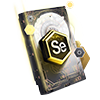 |
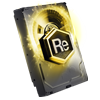 |
SAS and generally all enterprise level HDD that are designed for the intense operations of data centers till relatively recently arrived in the WD Ae, WD Se and WD Re series (as well as the Xe series too). each were made with slightly differing hardware environment in mind. Some with a 10,000RPM speed (but arriving in a much higher Price per GB), some in SAS (the 12GB/s connection) and others in SATA (6GB/s) but the whole range was starting to become rather messy and given that the specs in many cases were comparable to the PRO series, WD decided to phase most of them out in favour of the WD Gold series (available in both SAS and SATA).
The WD Velociraptor
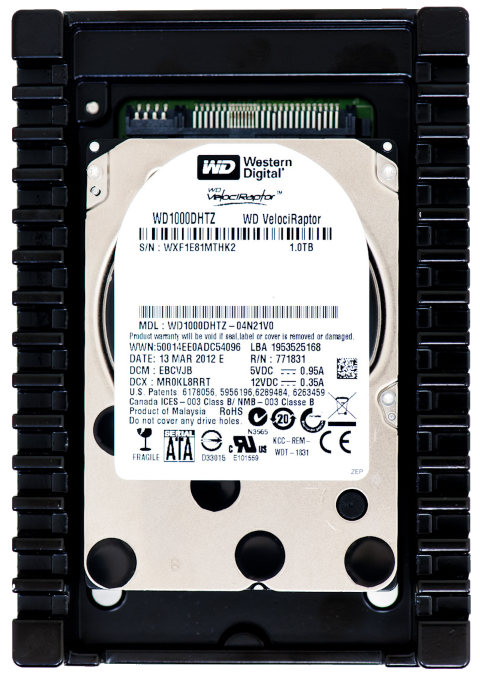 A very qwerky and unique HDD, sadly most units are also no longer available to buy. The Western Digital Velociraptor was one of the fastest commercially available HDD in the world! Only available in smaller capacities of 150GB and 300GB, the drives comprised of a 2.5″ 15mm HDD that was housed in a 3.5″ frame designed as a heatsink. This coupled with 10,000RPM and 15,000 RPM, this technology did not arrive cheap. However since the market increase in demand of SSD and the release of WD Gold, we have seen demand fall greatly – even in spite of a 1TB version being released. Sadly we are looking here at a really technology changing appliance that has sadly been surpassed.
A very qwerky and unique HDD, sadly most units are also no longer available to buy. The Western Digital Velociraptor was one of the fastest commercially available HDD in the world! Only available in smaller capacities of 150GB and 300GB, the drives comprised of a 2.5″ 15mm HDD that was housed in a 3.5″ frame designed as a heatsink. This coupled with 10,000RPM and 15,000 RPM, this technology did not arrive cheap. However since the market increase in demand of SSD and the release of WD Gold, we have seen demand fall greatly – even in spite of a 1TB version being released. Sadly we are looking here at a really technology changing appliance that has sadly been surpassed.
The WD Black2 and WD SSD
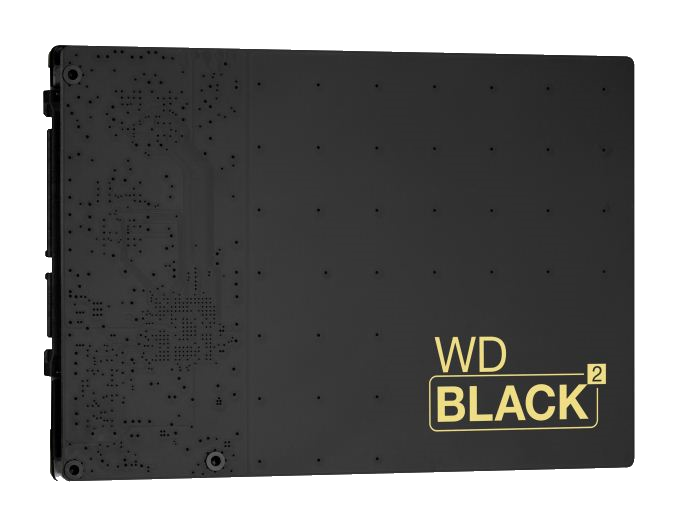 I have bundled these two together as they are both of interest, but for seperate yet oddly similar reasons. A couple of years ago WD saw the popularity of Hybrid drive technology (A drive that was HDD in design with platters and moving parts, but with a small portion of SSD NAND chip on board for your BOOT and mission critical software to run from). However for most, SSHD drives were let down by the SSD portion only being about 4GB to 20GB in size – Windows 7 alone couple eat up most of that without trying and currently a Full Windows 10 install will eat up 30-50 GB when everything is installed. So WD decided to go in all hot and heavy and release a much, MUCH larger portion of SSD on their drive of 120GB! Sadly, this came at a price and a price that, for many, was just too high. This coupled with poor marketing (rare on WDs part) and a lack of education provided to consumers on it’s benefits mean that it ended up missing target and eventually being abandoned
I have bundled these two together as they are both of interest, but for seperate yet oddly similar reasons. A couple of years ago WD saw the popularity of Hybrid drive technology (A drive that was HDD in design with platters and moving parts, but with a small portion of SSD NAND chip on board for your BOOT and mission critical software to run from). However for most, SSHD drives were let down by the SSD portion only being about 4GB to 20GB in size – Windows 7 alone couple eat up most of that without trying and currently a Full Windows 10 install will eat up 30-50 GB when everything is installed. So WD decided to go in all hot and heavy and release a much, MUCH larger portion of SSD on their drive of 120GB! Sadly, this came at a price and a price that, for many, was just too high. This coupled with poor marketing (rare on WDs part) and a lack of education provided to consumers on it’s benefits mean that it ended up missing target and eventually being abandoned
So what is WD Blue SSD, WD Green SSD and WD Black SSD?
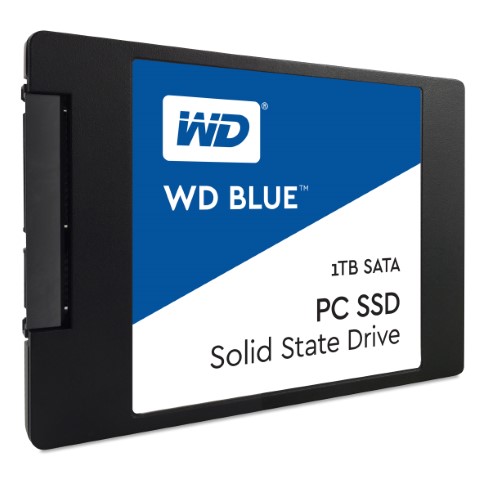 Not to be deterred, WD have entered this arena of Solid State Drives again, but this time utilzing their already popular and established colors model. The new WD range of WD SSD Blue, Green and Black (with WD Red SSD Sure to follow for SSD Cache in NAS or something) are available in standard 2.5″ SSD size and m.2 – the growing in popularity much, much smaller SSD that utilzes your m.2 PCIe slot. This time around they have played it smarter. They have priced the units better, made hundreds of pages of information on the range and like the HDD above) have separated each to a defined use. So, for guidance:
Not to be deterred, WD have entered this arena of Solid State Drives again, but this time utilzing their already popular and established colors model. The new WD range of WD SSD Blue, Green and Black (with WD Red SSD Sure to follow for SSD Cache in NAS or something) are available in standard 2.5″ SSD size and m.2 – the growing in popularity much, much smaller SSD that utilzes your m.2 PCIe slot. This time around they have played it smarter. They have priced the units better, made hundreds of pages of information on the range and like the HDD above) have separated each to a defined use. So, for guidance:
WD Green SSD for Smaller Capacities at 120GB and 240GB with read/write upto 500MB/s – 3 Year Warranty
WD Blue SSD for for mid range capacities at 250GB, 500GB and 1TB with Read and Wrote speeds over 500MB/s – 3 Year Warranty
WD Black SSD uses the new NVMe connection providing vastly faster speeds upto 2000MB/s read and 800MB/S Write, available in 256GB and 512GB Capcities – 5 Year Warranty
📧 SUBSCRIBE TO OUR NEWSLETTER 🔔
🔒 Join Inner Circle
Get an alert every time something gets added to this specific article!
This description contains links to Amazon. These links will take you to some of the products mentioned in today's content. As an Amazon Associate, I earn from qualifying purchases. Visit the NASCompares Deal Finder to find the best place to buy this device in your region, based on Service, Support and Reputation - Just Search for your NAS Drive in the Box Below
Need Advice on Data Storage from an Expert?
Finally, for free advice about your setup, just leave a message in the comments below here at NASCompares.com and we will get back to you. Need Help?
Where possible (and where appropriate) please provide as much information about your requirements, as then I can arrange the best answer and solution to your needs. Do not worry about your e-mail address being required, it will NOT be used in a mailing list and will NOT be used in any way other than to respond to your enquiry.
Need Help?
Where possible (and where appropriate) please provide as much information about your requirements, as then I can arrange the best answer and solution to your needs. Do not worry about your e-mail address being required, it will NOT be used in a mailing list and will NOT be used in any way other than to respond to your enquiry.

|
 |
Beelink ME Pro NAS Revealed
Best SOLID STORAGE NAS of 2025
Should You Worry About the NanoKVM Hidden Microphone?
Best Cheap NAS of 2025
Minisforum MS-02 Ultra - WHO IS THIS FOR??? (The First 48HRs)
Why People Use TrueNAS, UnRAID and Proxmox to Turnkey NAS (Synology, QNAP, etc)
Access content via Patreon or KO-FI
Discover more from NAS Compares
Subscribe to get the latest posts sent to your email.




